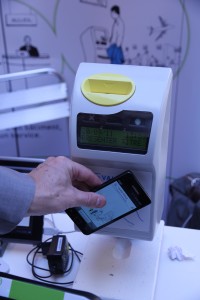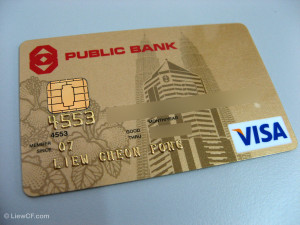April 11th, 2014 by Elma Jane
A new standard that uses Host Card Emulation (HCE) was introduced by VISA to enable financial institutions to securely host Visa accounts in the cloud. Visa’s move to support HCE includes tools and services as well as the standard. It is available now and will include support for QR codes and in-app payments in the future.
With this new service and platform that Visa is developing, it will enable clients and partners to issue Visa accounts digitally in the cloud, on secure elements in smartphones, or linked to a digital wallet. The solution will also enable the issuance of payment tokens that will replace the 16-digit payment account number and can be limited for use with a specific device, merchant or payment channel.
Layers of security will deploy by Visa to protect payment accounts in the cloud, including at the Visa network, application and hardware levels. Device fingerprinting technology, one-time use data, payment tokens and real-time transaction analysis will make up a multi-layered defense against unauthorized account access for their services.
Visa has intensified its Visa PayWave contactless payment application and is introducing a new implementation guidelines, program approval process standard and requirements for their standards.
Visa is also developing a tool, its software development kit (SDK) to support clients who wish to develop their own cloud-based payment applications or want to enhance their existing mobile banking applications with Visa PayWave functionality.
HCE is introduced to make it easier for developers to create NFC applications like mobile payments, loyalty programs, transit passes, and other custom services. Visa’s move to enable NFC payments with Android devices is welcome news and will guide the way for the payments industry.
Clients and partners around the globe are continuously looking for cost efficient, flexible and secure ways to enable mobile payments. The Android HCE feature provides with a platform to evolve the Visa PayWave standard, support the development of secure, cloud-based mobile applications, while at the same time offer greater choice.
Posted in Best Practices for Merchants, Credit card Processing, Credit Card Security, Electronic Payments, Financial Services, Merchant Services Account, Mobile Payments, Mobile Point of Sale, Near Field Communication, Smartphone Tagged with: accounts, android devices, approval, cloud, cloud-based mobile applications, contactless payment, device fingerprinting, Digital Wallet, digitally, financial institutions, HCE, host card emulation, in-app, mobile banking, nfc, payment account number, payment channel, payment tokens, payments, qr codes, real-time transaction, secure elements, securely, Smartphones, unauthorized, visa, visa network
January 13th, 2014 by Elma Jane
Australia & New Zealand Banking Group plans to use voice biometrics for authorizing large-value transfers to external bank accounts via its mobile banking service.
The Australian newspaper said ANZ is still piloting the voice biometrics feature, which would enable its mobile banking customers to make payments of more than A$1,000 ($910 U.S.)… The current limit for external transfers to clients of other banks using its smartphone app. Customers would authorize a higher-value payment by speaking into their smartphones, and ANZ’s IT system would compare their voices to digital voiceprints stored on its server.
The voice biometrics system will likely be launched within the next 12 to 18 months, Phil Chronican, the chief executive of ANZ’s Australia operation, said during a Sydney press conference last week.
Chronican added that ANZ also plans to use voice biometrics for authenticating transactions initiated at its call centers.
ANZ will launch the revamped mobile apps that it has been developing as part of the “Banking on Australia” initiative in the first quarter of 2014.
ANZ’s three-year old GoMoney mobile banking app and its more recent FastPay small business mobile payments service will both be re-released with new navigation and personalization options, iTNews said.
Posted in Credit card Processing, Credit Card Security, Mobile Payments, Smartphone Tagged with: authenticating, authorize, authorizing, biometrics, digital, mobile banking, Mobile Payments, mobile transactions, payments, personalization, smartphone app, transactions
September 26th, 2013 by Elma Jane
Convergence of mobile banking, ATM channels is a given
Auriga, Diebold, NCR and Wincor Nixdorf International have all demonstrated their mobile phone-based cardless cash withdrawal solutions. It is interesting to note that all of these vendors have embraced the QR code technology…a clear endorsement for a technology that is secure, low-cost, and readily available.
It doesn’t take a deep examination to realize that the mobile banking and ATM channels are heading toward convergence, and when the fusion of these dominant channels occurs, the consumer should be at the heart of it.
Auriga has advanced this idea by combining cardless ATM withdrawals with its mobile payments solution. The company has also added an option to make payments using a bank account rather than a card to support those consumers who do not embrace, or do not qualify for, traditional bank cards.
Not surprisingly, many large retailers are watching these developments with keen interest, ever mindful of the significant interchange fees they pay for accepting card based payments.
Although cardless ATM withdrawals and mobile payments are exciting, they are only the start of a deeper, multi-channel convergence. The real channel convergence is not happening at the endpoint devices, it is happening internally within the banks and processors, where modern, flexible technologies are being increasingly deployed to augment or replace yesterday’s legacy infrastructure.
The abilities to centralize business services to save costs, to easily deploy services over any channel for greater consumer choice and to achieve faster times to market for new services are no longer “nice to have” luxuries — they are now “must have” attributes to stay in the game.
It is little wonder that leading banks are shifting their IT investments away from solutions that perpetuate a fragmented services approach in favor of true multichannel systems that facilitate the ultimate consumer experience.
“Channel convergence does not mean that the ATM or the mobile device is at the center, it means the consumer is at the center.”
Once the consumer is placed at the center of your self-service strategy, you quickly realize it is their needs and preferences that should rightfully guide your approach.
The real secret is to allow consumers to interact with their bank the way they want to…with as few restrictions as possible. There is no magic silver bullet that will suit every consumer’s needs.
Banks can create deeper and more enduring relationships with their customers by implementing personalization profiles that allow consumers to tailor their own service experience.
MySpend solution is an excellent illustration of how banks and consumers can better cooperate to combat fraud, consumers can define their own use rules to significantly improve the accuracy of any fraud detection system. For example, card transactions from specific countries can be readily declined if a consumer knows that he or she will not be there, it also provides consumers with an instant notification of their transactions and the means for them to immediately flag any transaction they did not perform.
The use of consumer-specific profiles can be easily extended beyond the anti-fraud focus of MySpend solution. For example, Auriga’s Internet banking solution allows consumers to choose their own login security options from the bank-approved list, including an option for phone-based authentication using QR codes. More broadly, consumer-configured use profiles can improve the entire consumer experience, regardless of the chosen service channel.
Auriga’s ATM solution includes an intelligent menu that automatically tracks the consumer’s transactions and presents the most frequently used transactions on conveniently accessed menu buttons.
“The technology already exists to allow (consumers) to customize their own ATM menu through their mobile or Internet banking channel.” “It is only a matter of time to see the widespread adoption of this advanced customer-centric convenience.”
Ultimately, the business challenges are not about technology; they are about learning how to use the technology to promote growth and identify new competitive advantages. A recent ATM Marketplace report said that “the bank of the future will be a multichannel, multifunction and multi-device environment.” Given the current evidence, it seems this is a sentiment everyone can agree with.
Posted in Electronic Payments, Mobile Payments Tagged with: banking atm, banks, card based payments, convergence, diebold, interchange fees, mobile banking, Mobile Payments, mobile phone, QR code, secure, technology


